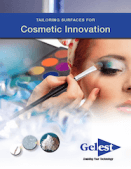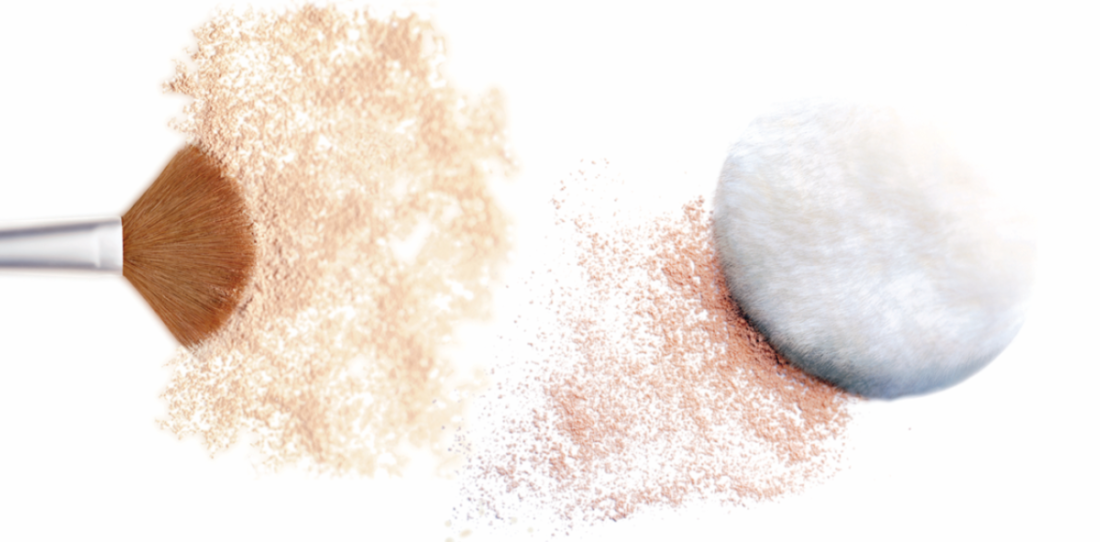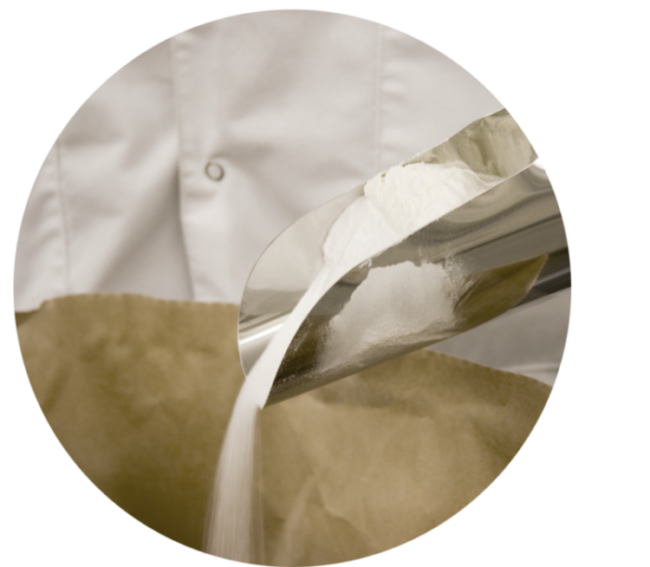Tailoring surface chemistry of pigments and powders provides robust, permanently modified behavior, expanding formulation latitude in personal care. Gelest has the unique ability to synthesize specialty silanes and silicones and employ these materials as reactive surface treatments to tailor properties of surfaces. This surface chemistry has demonstrated excellent performance in color cosmetic and skin care applications.
Potential benefits of surface treatments:
- Stable throughout the range of physiological pH
- Precise surface energy control
- Hydrophobicity/water repellency
- Water dispersible
- Hydrophilicity
- Oleophobicity/oil repellency
- Balanced lipophilicity
- Stable interaction with silicones, organics, and aqueous phases
- Dispersion and rheological control
- Lubricious tactile effect
Gelest offers several novel surface treatments along with conventional silane and siloxane surface treatments. These can be applied to a variety of inorganic structures including siliceous and non-siliceous powders and pigments.
Gelest Silky Slip (SS) – hydrophobic treatment with enhanced feel during and after application; perfect for powders
Gelest Hydrosperse (HS) – hydrophilic treatment with superior dispersion in water for high loading
Gelest Sebum Resistant (SR) – used for superior skin adhesion and resistance to sebum and water for lasting wear
Gelest Maximum Loading (ML) – treatment allows for high pigment loading and low viscosity dispersions to maximize color intensity
Gelest C8 Silane (TC) – globally approved, hydrophobic treatment to improve performance in oils and silicones
Gelest Diethicone (DE) – globally approved treatment for high pigment loading, improved spreadability, and enhanced color development
Gelest Dimethicone (DM) – improved slip and wetting for better pigment performance in oils and silicones
Skin Friendly (SF) – improved affinity for the skin and increased moisture binding capability
Gelest Polymeric C8 (AS) – globally approved hydrophobic treatment to improve wear on skin
Gelest has the unique capability to create new chemistry to modify the surface characteristics of particles, allowing a match to specific application requirements. Utilizing novel organosilicon compounds synthesized at Gelest, a series of surface modified pigments have been developed to address the challenging formulation requirements of color cosmetics.
Gelest provides microparticle modifications that enhance:
- Color development
- Polarity
- Adhesion
- Dispersion
- Dispersibility and rheological behavior
- Photochemical, thermal stability
Common types of materials for surface treatments:
- SILICEOUS: natural & synthetic
- NON-SILICEOUS: natural & synthetic
- SPECIALITY: metallic, fluorescent, luminescent, & phosphorescent
Physical considerations based on physical properties:
- Density
- Aspect ratio
- Surface area
- Contact angle
- Chemisorption
- Electrophoretic mobility
- Pore size and volume
- Particle size distribution
Chemical considerations based on surface properties:
- Oleophilicity
- Oleophobicity
- Zeta potential
- Hydrophilicity
- Hydrophobicity
- Lubricity
Chemical considerations based on bonding mechanisms:
- Ionic bonding
- Metallic bonding
- Covalent bonding
- Aromatic bonding
- Hydrogen bonding
- Acid-base interactions
- Crystallinity modification
- Wetting and surface area effects
Our custom surface modification services allow users to select custom and proprietary treatments applied by a variety of deposition technologies on a wide range of fillers and pigments. Our technical representatives are pleased to discuss the options available.
Gelest also applies a variety of other standard surface modifications to many pigments and fillers.



